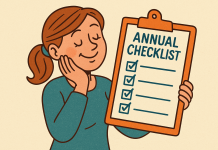When I became a parent, I expected surprises, but I didn’t realize how much explaining I’d have to do to other adults.
I’m a nonbinary mom raising kids in Vermont, and while that means a lot of joy and self-discovery, it also means navigating a world that’s still catching up with nonbinary parenting.
I show up at school drop-offs and parent-teacher conferences as myself, a nonbinary mom, and often that can throw people off. So, I’m writing this for those who are curious, those who care, and those walking a similar path.
School Forms, Gender Boxes, and the Email Salutations that Make You Cringe
You don’t realize how aggressively gendered parenting is until you’re trying to fill out school forms as a nonbinary parent. Every piece of paper seems to want me to declare “mother” or “father.” While I proudly identify as a nonbinary mother, that is not the case for every nonbinary parent. It’s a small thing, but it takes a mental toll.
Email greetings like “Hi Moms & Dads!” or “Hello Ladies!” make me cringe, even when I know it’s so benign. I don’t often correct people, but I do make a note, if replying all, to use more gender-inclusive language in my response.
It may not be something that anyone actually notices, but it’s worth it to make space for the next nonbinary parent who walks into that inbox.
Talking with Teachers: Advocating Without Explaining Your Entire Identity
Parent-teacher conferences can feel like speed-dating with a side of identity politics. I try to lead with my kid, how they’re doing, what they need, but often I have to quickly explain my pronouns. The best teachers don’t flinch, they adapt. Some even ask follow-up questions in a respectful way. Others… well, I do a lot of nodding and redirecting as they continue to misgender me.
This is one reason I love meeting on Zoom; I get to list my pronouns beside my name, and the nonbinary parenting conversation never even needs to come up.
Quick List: 3 Ways Schools Can Be More Inclusive of Nonbinary Parenting
- Update forms to include “parent/guardian” instead of “mother/father” and add space for titles like Mx.
- Ask for pronouns and titles at the beginning of the school year and actually use them.
- Use inclusive language in emails and newsletters — “families,” or “grown-ups,” or “guardians” instead of “moms and dads.”
Playground Politics: How My Kid’s Friends (and their Parents) Respond
Kids are usually the easiest part of this. When my oldest child introduces me with, “This is my mom, they’re nonbinary,” her friends tend to shrug and say, “Cool. Wanna play puppies?”
Adults are a different story, and part of this is my own fault. I’m naturally socially awkward, so I often avoid discussing my gender identity or correcting misgendering unless it’s essential. When I do advocate for myself and my nonbinary parenting journey, some parents respond by going out of their way to be inclusive. Others smile tightly and avoid saying anything that might require pronouns ever again.
I’ve learned to read the room and meet people where they are, while also modeling what respect looks like.
What My Kids Learn From Me (and What I Learn From Them)
One of the most unexpected gifts of nonbinary parenting is how open and curious my kids are. They’ve grown up knowing that gender isn’t a box you get stuck in, it’s something you get to define.
They ask great questions. My oldest corrects people gently but firmly when they misgender me (including my mother-in-law!) Most times, it’s a non-issue. You’d be surprised how easily my kids transitioned to using “they/them” pronouns in natural conversation when referring to me. My oldest was around 7 when I began using they/them pronouns, and my youngest has only ever known me this way.
As for me? I’ve learned that showing up as myself is the most important parenting choice I can make. Not just for me, but also for them.
Community, Connection, and the Importance of Visibility
I’ve met other queer and trans parents through my podcast, Quiet Connection: Postpartum Mental Health, and in online communities. That connection matters. It reminds me I’m not alone, even if it sometimes feels that way in a room full of birthday party Moms and Dads.
Visibility isn’t just about being seen, it’s about being included. It’s about making space for our kids to see that their families matter, no matter what form they take.
A Note to Other Nonbinary Parents
If you’re reading this and thinking, “Same,” just know, I see you. Whether you’re out and loud or quiet and cautious, your existence matters. Your pronouns matter. Nonbinary parenting is real and valid.
You don’t owe anyone an explanation, but you are allowed to take up space. You’re allowed to correct people. You’re allowed to make room for joy in your nonbinary parenting journey.
Even when it’s hard, your kids are watching you live your truth, and that’s powerful.
Final Thoughts
Nonbinary parenting is equal parts beautiful and exhausting. I wouldn’t trade it for anything, but I would like fewer awkward emails.
I hope sharing my nonbinary parenting journey helps create a little more room for all kinds of parents. We’re already out here, showing up, cheering from the sidelines, signing the permission slips, just like everyone else. Just with a little more explaining along the way.
Pin this post and be sure to follow Vermont Moms on Pinterest!
Vermont Moms Insiders get exclusive content that you do not want to miss, so sign up today!












